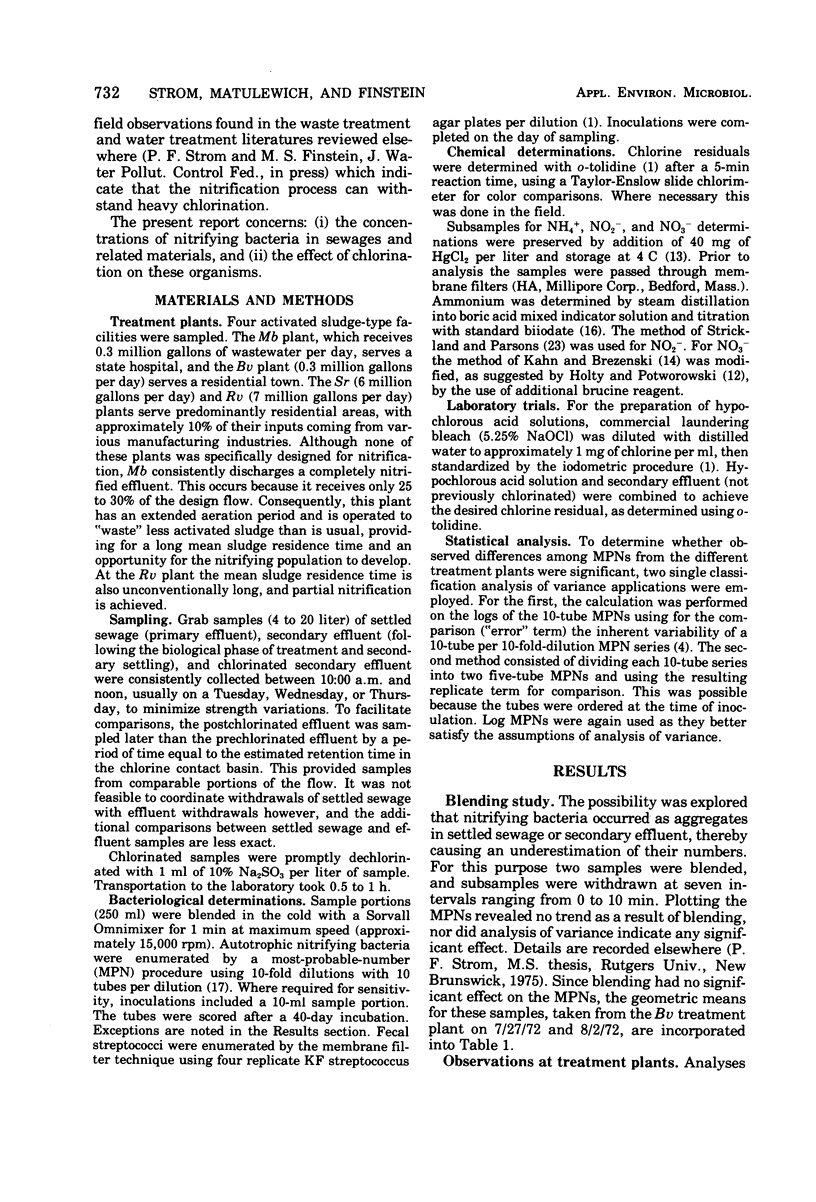Abstract
Estimates of NH4+-and NO2-oxidizers in samples from four activated sludge plants treating mainly domestic sewage were obtained using a most-probable-number (MPN) technique. Ranges of concentrations per milliliter of each, respectively, were 1,010 to 3,880 and 79 to 145 in settled sewages, 32 to 7,420 and 2 to 1,010 in secondary effluents, and less than 0.1 to 622 and 0.1 to 70 in chlorinated secondary effluents. The results of this field study indicated that nitrifiers were more resistant to chlorination than fecal streptococci, which were also enumerated. In laboratory studies the survivals of these bacterial groups in secondary effluents were determined after exposure to chlorine residuals of up to 2 mg/liter for 0 to 60 min. The nitrifiers proved considerably more resistant than fecal streptococci, with NO2-oxidizers showing greater resistance than NH4+-oxidizers. Below the outfall of one of the plants that discharges heavily chlorinated unnitrified effluent, NH4+-oxidizers amounted to approximately 200 X 10(5) per g of slime scraped from stream-bed rocks. Upstream of the outfall this was approximatley 3 X 10(5)/G.
Full text
PDF






Selected References
These references are in PubMed. This may not be the complete list of references from this article.
- ANDERSSON P. Nutritional muscular dystrophy in cattle, with special reference to the functional state of the thyroid. Acta Pathol Microbiol Scand Suppl. 1960;48(Suppl 134):1–91. [PubMed] [Google Scholar]
- Barrett M. J. Predicting the effect of pollution in estuaries. Proc R Soc Lond B Biol Sci. 1972 Mar 21;180(1061):511–520. doi: 10.1098/rspb.1972.0035. [DOI] [PubMed] [Google Scholar]
- COCHRAN W. G. Estimation of bacterial densities by means of the "most probable number". Biometrics. 1950 Jun;6(2):105–116. [PubMed] [Google Scholar]
- Matulewich V. A., Strom P. F., Finstein M. S. Length of incubation for enumerating nitrifying bacteria present in various environments. Appl Microbiol. 1975 Feb;29(2):265–268. doi: 10.1128/am.29.2.265-268.1975. [DOI] [PMC free article] [PubMed] [Google Scholar]
- RITTER C., TREECE E. L. Sanitary significance of cocci in swimming pools. Am J Public Health Nations Health. 1948 Nov;38(11):1532–1538. doi: 10.2105/ajph.38.11.1532. [DOI] [PMC free article] [PubMed] [Google Scholar]


